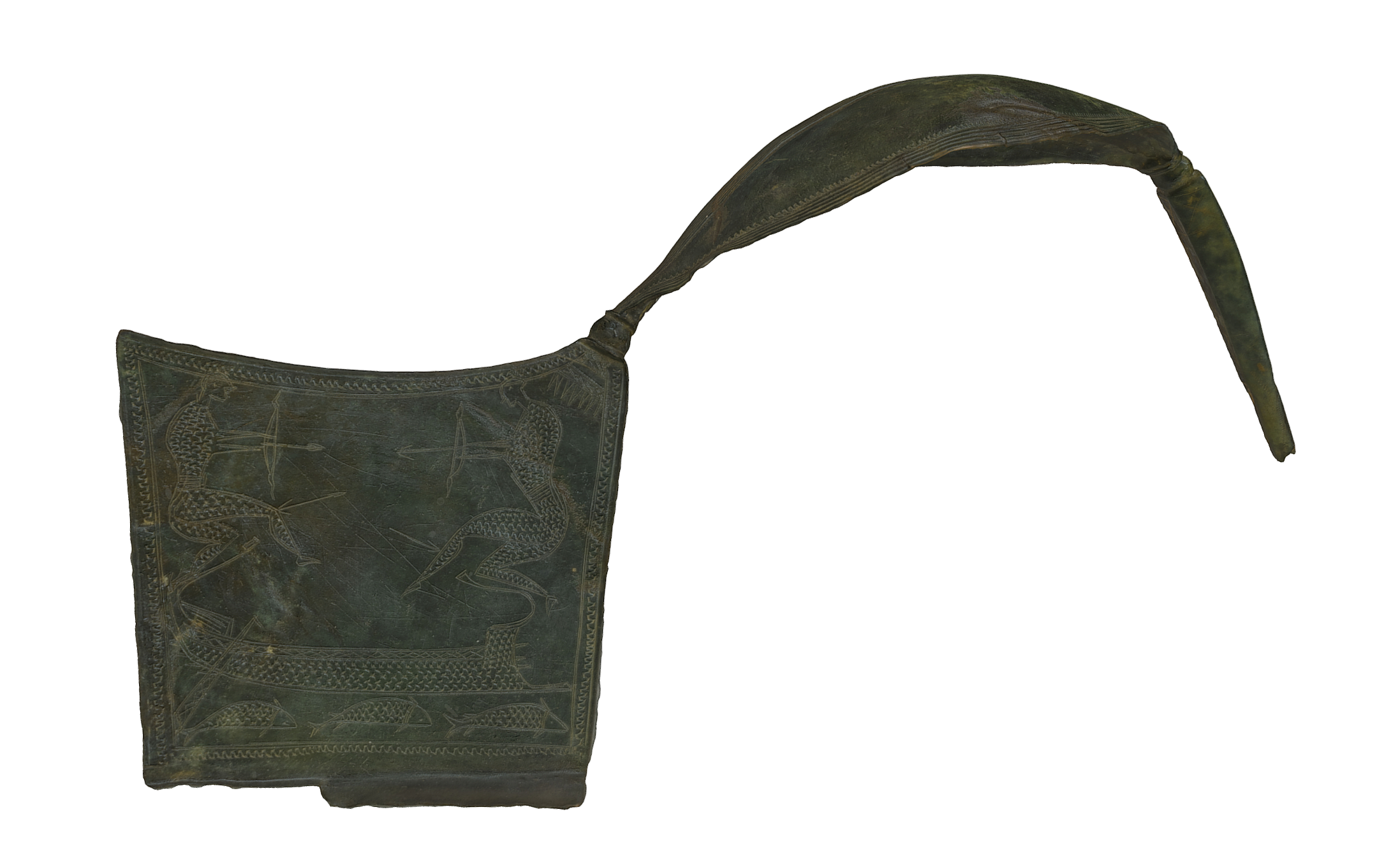Single-levelled ship to the right with a low flat hull. Massive rectangular bow with a concave stempost integrating a beak-shaped ram and terminating in an incurving S-shaped horn that curves forward then backward parallel to the hull and flares out toward the tip. There are three short horizontal timbers tapering to a pointed tip projecting from the stermpost. The forecastle is a solid rectangle integrated to the bow. The sternpost begins by rising gradually, then curves sharply inward mid-way after which it becomes straight and tapers towards the end, capped by a rectangular extremity. Three short timbers tapering to a pointed tip project from the base of sternpost. The aftercastle consists of a rail and possibly fitted with a screen, as suggested by the three filler lines. A single quarter rudder with a tiller is shown slightly forward of the aftercastle and widens towards the oar blade into a roughly triangular shape decorated with a lozenge chain. Running the length of the gunwale is a latticed bulwark with the same lozenge chain decoration as that used on the quarter rudder. The ship's hull itself is filled with a scaly pattern that is also used as filler for the bodies of the fishes and the archers alike.
Single-levelled galley
A63
c. 700-675 B.C. (early 7th century)
Idaean Cave, Crete
catch plate: 9 x 9 cm
Bronze fibula of the Attic-Boeotian type with decorated catch-plate
Athens National Museum 11765
Basch 1987: 193, no. 411; Boardman 1984: 265, no. 346; Hampe 1936: no. 28, pl. 14; Morrison and Williams 1968: 78, Arch. 20
Side A: Thought to depict a mythological scene showing Herakles fighting the Actorione/Moliones Siamese twins with a sword. The twins are depicted as having only one body with two heads, four arms and four legs
Side B: Two archers face off each other, hovering above a ship to the right. Each one is already struck by an arrow in the leg. Three fish swim below.
Basch, L. 1987. Le musée imaginaire de la marine antique. Athens: Institut Hellénique pour la preservation de la tradition nautique.
Boardman, J. 1984. “Crete,” in J. Boardman and N.Hammond (eds.) The Cambridge Ancient History. Plates to Volume III. The Middle East, the Greek World and the Balkans to the sixth Century B.C. Cambridge, Cambridge University Press, pp. 222-233.
Hampe, R. 1936. Frühe griechische Sagenbilder in Böotien, Ate¬ne : Deutsches archäologisches institute.
Morrison, J.S. and R.T. Williams. 1968. Greek Oared Ships: 900-322 B.C. Cambridge: Cambridge University Press.







